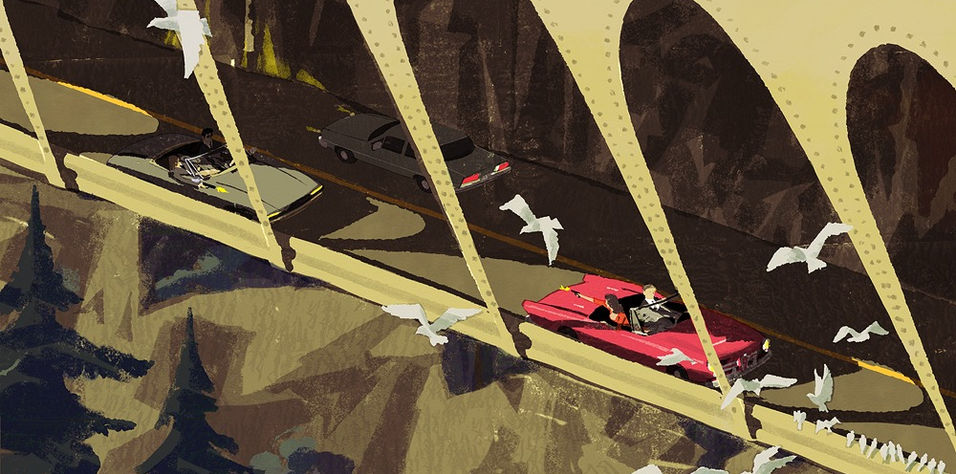
About this Artist
In Tokyo’s bustling creative landscape, Tatsuro Kiuchi stands as a quiet revolutionary. For over two decades, the illustrator, painter, and educator has redefined visual communication in Japan, merging rigorous traditional craft with contemporary narrative clarity. His work—whether for global publishers, film studios, or children’s books—operates on a singular principle: "What you see visually is essential."
Kiuchi’s path was unconventional. Initially studying biology ("I loved living things"), he pivoted to art after recognizing his limitations in science. A pivotal critique from a Tokyo art director—"You lack the basics"—propelled him to California’s ArtCenter College of Design. There, a reproduction assignment of N.C. Wyeth’s work became his epiphany: "I learned storytelling through light, dark, and composition." This fusion of scientific observation and artistic discipline now defines his practice.
Kiuchi rejects abstract pretension. "I aim to depict concrete things: flowers, dogs, people—elements anyone understands," he states. Yet within this accessibility lies innovation: his compositions fracture perspectives, his color palettes mute reality into dreamlike serenity (seen in his Criterion cover for Ozu’s Good Morning), and his textural gouache techniques evoke vintage lithography. "No matter how profound the concept, if it’s visually dull, it fails."
Despite claiming limited film knowledge, Kiuchi’s posters reveal a master semiotician. His approach to film posters is paradoxically restrained: "I minimize my interpretation, reconstructing scenes without distorting the director’s intent." For Purple Noon, he painted Alain Delon not as icon but as fragmented memory—"a challenge because his beauty was almost abstract." His reference? Teenage years collecting vintage flyers, where Clint Eastwood’s Dirty Harry poster symbolized unattainable cool.
As an educator, Kiuchi bridges eras. He urges students to study Egon Schiele’s "clean, observant lines" for foundational drawing, while dissecting conceptual illustrators like Emiliano Ponzi. His own process remains resolutely analog: daily eBay hunts for "old bric-a-brac" and video games fuel his chromatic imagination. "Digital dominates Japan, but traditional media teaches patience," he notes, citing watercolorist Goro Sasaki’s YouTube tutorials as essential viewing.
At 58, Kiuchi still wrestles with identity. "Style is an attitude, not confinement," he reflects, wary of ego stifling communication. Whether illustrating children’s books ("I leave space for the reader’s imagination") or mentoring Tokyo’s next generation, his mission endures: to make the familiar extraordinary through light, structure, and unwavering respect for the viewer’s intelligence.
In an age of sensory overload, Kiuchi’s art whispers—and resonates like thunder.

Leave your comments
Subscribe to new artist updates
FOR EXHIBITED ART WORKS © ALL RIGHTS RESERVED BY THE ARTIST






